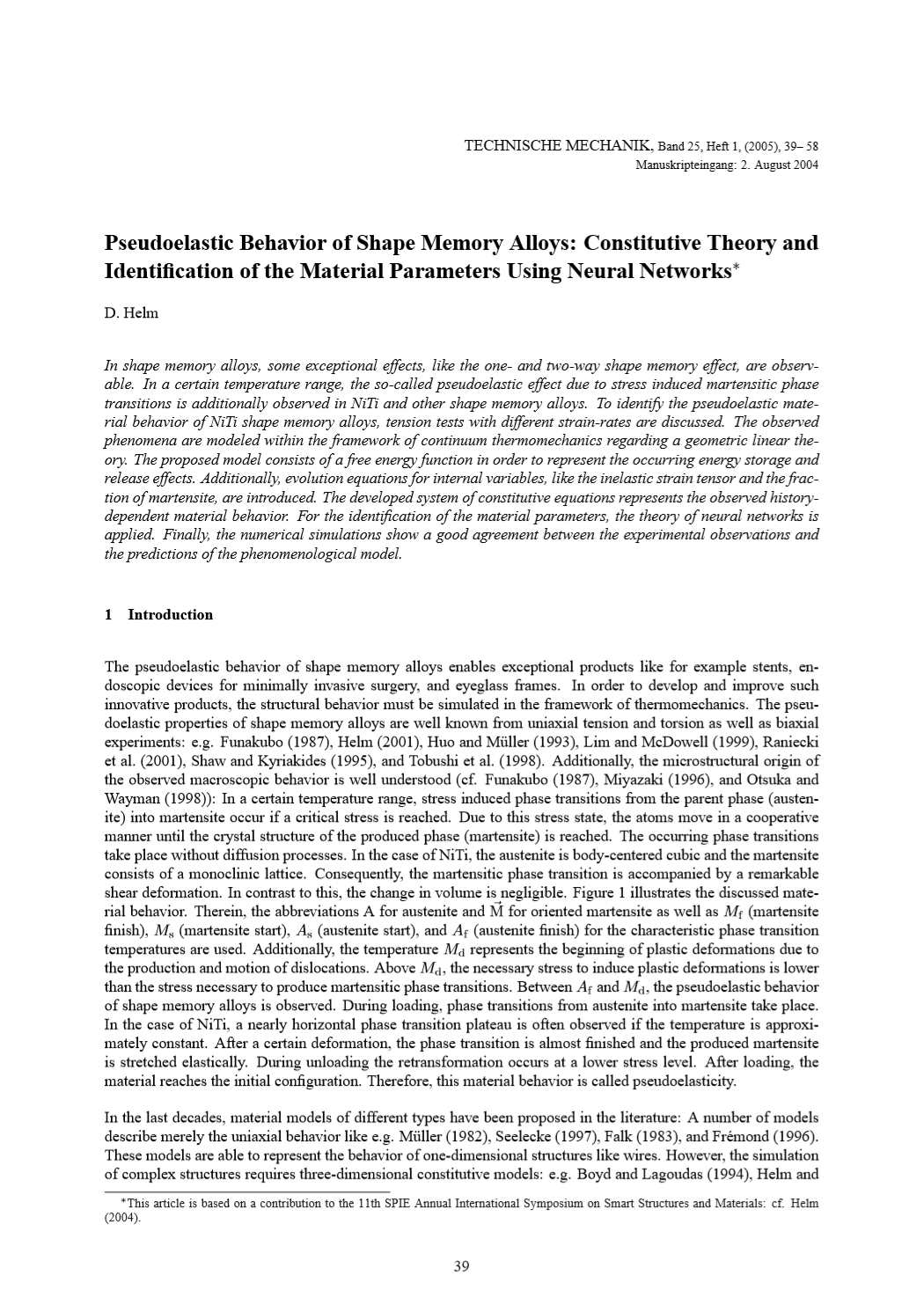Pseudoelastic Behavior of Shape Memory Alloys
Constitutive Theory and Identification of the Material Parameters Using Neural Networks
Abstract
In shape memory alloys, some exceptional effects, like the one- and two-way shape memory effect, are observable. In a certain temperature range, the so-called pseudoelastic effect due to stress induced martensitic phase transitions is additionally observed in NiTi and other shape memory alloys. To identify the pseudoelastic material behavior of NiTi shape memory alloys, tension tests with different strain-rates are discussed. The observed phenomena are modeled within the framework of continuum thermomechanics regarding a geometric linear theory. The proposed model consists of a free energy function in order to represent the occurring energy storage and release effects. Additionally, evolution equations for internal variables, like the inelastic strain tensor and the fraction of martensite, are introduced. The developed system of constitutive equations represents the observed historydependent material behavior. For the identification of the material parameters, the theory of neural networks is applied. Finally, the numerical simulations show a good agreement between the experimental observations and the predictions of the phenomenological model.





